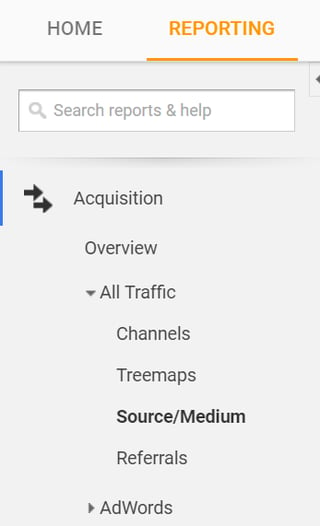If you’re unfamiliar with your Google Analytics dashboard, logging in can feel like opening a book written in a foreign language. Bounce rate? Referrals? Intelligence events?
It’s enough to make even the savviest entrepreneur slam his laptop shut in frustration (after all, isn’t this why we hire a tech team?!).
In all seriousness, though, your Google Analytics dashboard may feel like a puzzle, and in fact it is—a good kind of puzzle that holds the clues to making more money for your business every month.
We’re taking the mystery out of Google Analytics for entrepreneurs and breaking down the most important metrics you should be monitoring from month to month. Plus, we’ll tell you exactly what they mean in terms of your bottom line.
Traffic
The almighty website metric. How many people are coming to your online storefront every month?
Your overall traffic is one of the easiest metrics to understand. If it’s going up each month, you’re in good shape. If it’s leveling off or dropping, you’ll want to take a closer look at why.
Google Analytics will give you a few big-picture numbers pertaining to traffic: sessions, users and pageviews.
A new session happens any time a visitor calls up your site and ends when they click away from your domain. Users measures the number of unique individuals that come to your site. Pageviews counts individual views on pages of your site.
So, let’s look at a real life example. If I come to your website via the home page, click on your About page, click on your Pricing page, then go check my email, your stats for my visit would look like this:
Sessions: 1
Users: 1
Pageviews: 3
If I come back again tomorrow, it’ll register a new session, but will not count me as an additional user. Make sense?
Even more important than your general traffic numbers is the source of your traffic. This can be found in Google Analytics by visiting Reporting > Acquisition > All Traffic > Source/Medium

When you select Source/Medium, you’ll see a numbered list of all the sources that are sending people to your website, plus a collection of stats for each one.
Why is this important? Because it tells you the specific sources of traffic that are most valuable for your business.
Here's an example scenario: you get 1,000 visitors per month from Facebook, but they have a high bounce rate and very few conversions (more on these metrics below). You also get 200 visitors per month from Google organic searches, and they have a low bounce rate and lots of conversions.
This tells you that although you get fewer visitors from Google, each one of them is far more valuable for your business. They convert into paying customers more often.
If you’re using this intelligence to make a good business decision, you might stop spending money on a social media consultant and instead invest in an SEO specialist. Let your traffic tell you where to spend more money.
Bounce Rate
Simply put, what percentage of people “bounce” from your site (AKA leave) after viewing only one page? If your bounce rate is 60%, this means 60 out of every 100 people view only the page they came in on, then go elsewhere on the web.
Bounce rate is like golf: a lower score is better.
What’s a good bounce rate? Unfortunately, we can’t give you a cut and dry answer. It depends largely on your industry and the type of traffic you’re driving (sales vs. educational vs. entertainment, etc.)
As a general rule of thumb, a bounce rate under 40% is great. Between 40% and 65% is pretty average.
If you’re consistently seeing a bounce rate higher than 70%, you probably want to spend some time improving it. Why? Because it means people aren’t finding what they came looking for on your website. This not only translates into fewer sales, it also dings your website’s value in the eyes of search engines.
You can improve your bounce rate by making sure each page of your website is ultra-targeted. Have an About Us page to explain your company’s background. Have a Services page that outlines all of your packages, and so on. Make your website a super-clear roadmap that directs visitors to exactly where they need to go.
Additionally, make sure the traffic you’re sending to your website points people to the exact page they’ll want to land on. For example, don’t talk about a sale on Facebook and then include a link to your home page, where people are going to have to click around looking for the sale. Instead, send them directly to a landing page that talks all about the sale. Boom! They won’t click away out of frustration.
The Rocket Fuel Blog has a great explainer on bounce rates with stats from a sample of different websites.
Conversions
Finally, the money metric: conversions.

A conversion is a fancy way of saying someone became a customer via your website—yep, they converted. A conversion might also mean someone converted into an email list subscriber or a downloader of your e-book. Basically, a conversion is a desirable action someone takes on your website.
Here’s the funny thing about conversions—they show you your traffic in a whole new light. You might be getting 10,000 page views per month, but if you’re not getting a single conversion, all that traffic is worthless.
It’d be much better to have just 1,000 page views per month with 20 conversions (which, statistically speaking, hits the standard conversion rate of around 2%).
If you’re experiencing a low conversion rate, you may need to use stronger copywriting that encourages users to take action (also known as calls to action). Or, you might want to focus on the layout of your site, making sure it flows smoothly from the point of entry to the ‘Buy Now!’ button.
When you look at all three of these metrics in tandem, you’ll get a pretty good idea of where your marketing efforts are paying off, where your customers are actually coming from, and where you can improve to make more money from your website traffic.
Do you check in on your Google Analytics regularly? Which metrics do you pay the most attention to?
For more marketing insights for entrepreneurs delivered to your inbox each week, subscribe to our blog by clicking below!













.png)




